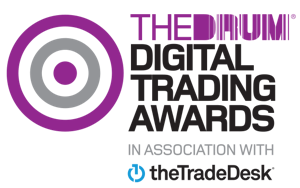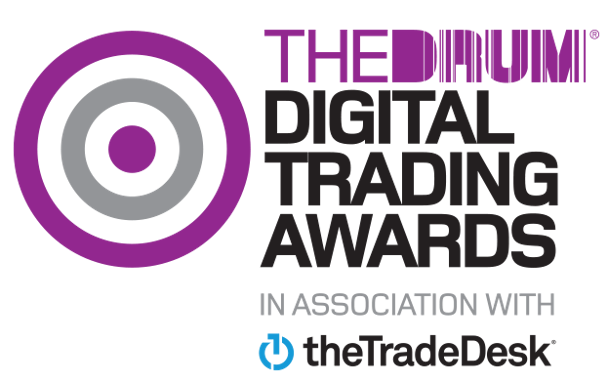'Data-driven marketing and creativity are not mutually exclusive'
Ahead of the second annual Digital Trading Awards, The Drum speaks with some of the awards judges to gain insight into the key issues facing the industry.


The rampant rise of programmatic media trading technologies is arguably the defining narrative of the contemporary advertising industry, and to mark some of the best work, plus leading personalities in the sector The Drum's Digital Trading Awards are entering their second year.
To ensure the finest work is recognised, The Drum has assembled some of the sector's leading minds to help assess the calibre of entrants, all of whom will be recognised at a gala event on May 4 in London.
The deadline for entry (Febraury 12) is fast approach, and ahead of this The Drum speaks with judges to offer an insight into their take on the industry.
Below Nigel Gilbert, AppNexus, VP of strategic development, EMEA, discusses the fallout of the sector's ongoing consolidation, brands' changing attitudes towards programmatic, the emergence of artificial intelligence (AI), plus changes in how advertisers and media owners interact.

The Drum: There has been much consolidation in the space over the last 12-18 months, in particular Facebook, Google, and now Verizon have been acquisitive in the space. Not to mention the many ad tech players. How do you think this is likely to affect media trading in the sector?
NG: In 2016 we expect to see a greater application of new data as programmatic adoption continues to grow. Magna Global estimates that the global programmatic market will increase from $29.3bn in 2015 to $61.9bn in 2018, representing an annual growth rate of almost 21 per cent.
Against this backdrop, major media/tech players and brands have started to understand that owning a sophisticated technology asset or having the right technology partner is crucial to the application of data, particularly in the UK where the media landscape and user experience are so fragmented.
This trend is closely tied to the emergence of just a handful of end-to-end platforms – namely, DoubleClick, Facebook and AppNexus – that are capable of providing scaled technology.
In recent years, Google and Facebook have strongly pushed the use of search and social data respectively, leading brands to believe that these are the most important standalone data sets needed to successfully engage with consumers.
However, as we can’t predict how consumer behaviour will evolve over time - from how people will consume news to how they discover products - brands need to recognise the value of using multiple data sets.
With traditional search already under threat with the advent of Artificial Intelligence (AI), the integration of mobile, search, social and point of sale data sets, as well as others, will be crucial when creating a successful 360-degree campaign. Not only will a full data set help us better understand our audience, but ultimately it carves out a path for what their next move should be.
The Drum: Much has been made of the move towards more closed trading environments (i.e. away from open exchanges, towards things such as PMPs, etc.) at least from the sell-side. What has driven this, and do you think buyers are likely to follow suit?
NG: PMPs [or private marketplaces] are an extension of open marketplaces, allowing greater control over who can make purchases via the platform and on what terms.
Despite publishers’ increasing interest in PMPs, open marketplaces are providing buyers with great opportunities because of the scale, flexibility and maximum level of competition they offer, as well as their ability to secure maximum yield for inventory. Advertisers can easily and efficiently access ad inventory in real time on the open ad exchange, making it an attractive proposition.
An open, unified, and powerful programmatic platform - like the AppNexus ad exchange - empowers customers to more effectively buy and sell media, allowing them to innovate, differentiate, and transform their businesses, which can’t be achieved at scale by PMPs.
Buyers are focusing on securing quality inventory and placements through strategic relationships with important partners, which allow them to mitigate risks around viewability and help rectify the opaque nature that some exchanges can bring.
The Drum: Many still bemoan the disparity between data-driven marketing techniques (and those who espouse such techniques), and the advertising industry's creative community. Why does this gap continue to exist, and can you suggest any ways to help improve the lack of cohesion?
NG: Data-driven marketing and creativity are not mutually exclusive. It’s the integration of data in creative work and the creative application of data that can enhance the user experience and ultimately win over consumers.
The gap mainly exists at the moment because of a lack of understanding. There are misconceptions because data has historically been used to drive performance, but data can now be used to enhance branding campaigns and drive greater creativity in media planning, storytelling and dynamic creative.
This level of scepticism around programmatic's ability to go beyond performance campaigns is decreasing, with marketers discovering the extent to which it allows them to build the brand story quickly and at scale.
In our Reaching Full Potential Report published in November last year, we found that nearly three quarters of the ecosystem (71 per cent) now recognise knowledge of programmatic as one of the most important capabilities that agencies will need to possess in five years’ time.
To put that into better context, only 64 per cent of agencies believe that high levels of creativity will be important. Once something becomes more important to an ad agency than creativity itself, you know it’s become a pretty big deal.
The Drum: How much of a problem do bad actors (i.e. fraudsters, etc.) continue to play in the sector? And does this continue to significantly hold back spend?
NG: As programmatic adoption increases, the industry demand for more sophisticated technology to tackle malware and invalid traffic grows stronger. Big strides have already been made to address these concerns. For example, AppNexus, in its commitment to creating a better internet, launched its Inventory Quality initiative to filter invalid traffic from its platform, resulting in platform-wide view-through rates rising 75 per cent and post-click conversion rates surging 130 per cent.
To our knowledge, we are the only platform other than LiveRail that disallows arbitrage, a key entry point for invalid inventory. We have a platform that is fully transparent, and people are more confident in technology solutions that secure valuable impressions without risks - and deliver significant growth in yield as a result. I’m really excited to be part of a company that is driving innovation and making a positive impact.
The Drum: Ad blocking has been one of the key issues of 2015, do you think this will lead to innovation in the sector, as advocated by outfits such as AdBlock Plus?
NG: Ad blocking was a big wake up call for the industry, highlighting the need to create an even better user experience in the digital advertising world, which naturally leads to innovation. Every actor involved in the ad cycle - from technology providers to buyers, sellers, creative agencies and publishers - has a responsibility to improve the user experience via better media planning, creative execution and technical resources to ensure that we retain and protect the open internet.
The Drum: Do you find awareness of programmatic advertising has increased among brands? If so, what has the effect on the wider industry been?
NG: Programmatic now represents more than half of all display campaigns in the UK. We have gone beyond the tipping point where programmatic is something you test, to it now becoming a core part of any brand or marketer’s media plan in terms of its execution.
Brand awareness of multiple data sets (rather than from a single source) is certainly increasing, and they are beginning to understand the extent to which these multiple data sources can be applied to enhance the execution of campaigns and achieve greater success. This is of course crucial for programmatic to reach its true potential.
For more details about the awards please click here

